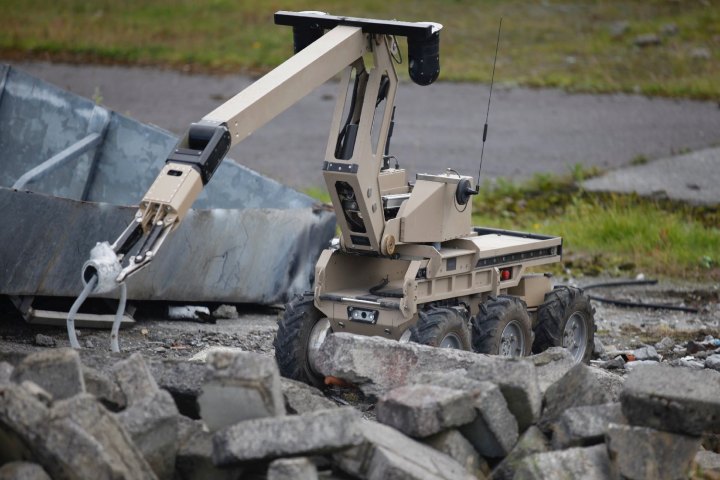
While robots aren’t usually relied upon for demolition work, in this case the site had been deemed too hazardous for humans after four workers were tragically killed when one of the buildings partially collapsed. In the aftermath, a 160-foot exclusion zone was set up, with no people allowed to enter the site.
As a result, a plan was put in place to use robots for the task — ranging from a smaller robot weighing in the region of 88 pounds to super-heavy machines weighing 4 tons. For the first part of the work, two robots made by the Irish company Reamda, referred to as the Robot Reacher and R-Evolve, surveyed the site. This involved taking photos and video, as well as utilizing a 3D laser scanner to study the six support columns of the building intended for demolition.
The gathered data was then passed onto another company, which built replicas of the columns so that the initiative could be tested before going ahead. Once all parties involved were satisfied, remotely-operated vehicles (ROVs) belonging to Reamda and a Swedish demolition company called Brokk were sent in to place the explosive charges using robotic manipulator arms.
The demolition was successfully completed without incident.
“As technology continues to evolve it makes sense that we’ll hand more and more of these dangerous tasks over to machine,” Padraig O’Connor, managing director of Reamda, told Digital Trends. “It’s the same as bomb disposal and the way that we used to send in officers wearing protective suits: Today that’s considered a last resort.
“But this isn’t going to be about replacing humans with robots,” he continued. “You’ll still be benefitting from human experts’ skill and knowledge of these sites; it’s just that we’ll be able to send machines in to do the dangerous part of the job. We’re not doing anyone out of work, it’s just about putting people in a different seat.”
Editors' Recommendations
- Smoothie-making bot at Walmart signals the rise of the robot fast-food worker
- Samsung’s Powerbot R7260 robot vacuum uses a rubber blade to clean corners


